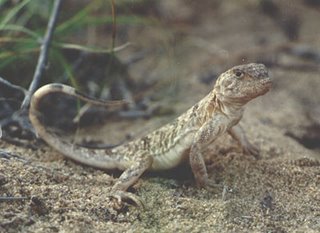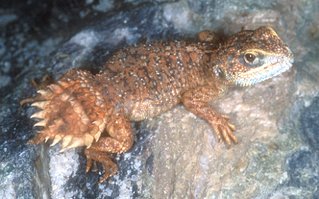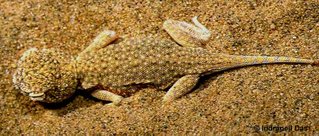 So, life goes on. Overall, I feel that the sasquatch post – the most popular article yet posted to this blog (attracting c. 3000 hits on one day) – got a fair hearing, though I continue to be unhappy with people who consider themselves sceptics but are, in fact, ‘rejectionists’ (and I’m not necessarily referring to anyone who posted comments to this blog). While research plans have generally fallen by the wayside due to other commitments, various projects involving pterosaurs, sauropods and other Cretaceous tetrapods are still on-going. Mark Witton (yes yes, Buckingham Palace, blah blah blah) and I are now collaborating on a project about azhdarchid ecology, and the big British dinosaurs manuscript is STILL trundling through the system (ah, the wonder that is co-authors). The other day I attended the Hampshire Wildlife Trust bat and badger social evening and got to listen to recordings of screaming rabbits, all in the name of an evening’s entertainment. Then there was the podcast interview: more on that in a few days [adjacent image of Laudakia - see below - from http://www.herpetofauna.at/].
So, life goes on. Overall, I feel that the sasquatch post – the most popular article yet posted to this blog (attracting c. 3000 hits on one day) – got a fair hearing, though I continue to be unhappy with people who consider themselves sceptics but are, in fact, ‘rejectionists’ (and I’m not necessarily referring to anyone who posted comments to this blog). While research plans have generally fallen by the wayside due to other commitments, various projects involving pterosaurs, sauropods and other Cretaceous tetrapods are still on-going. Mark Witton (yes yes, Buckingham Palace, blah blah blah) and I are now collaborating on a project about azhdarchid ecology, and the big British dinosaurs manuscript is STILL trundling through the system (ah, the wonder that is co-authors). The other day I attended the Hampshire Wildlife Trust bat and badger social evening and got to listen to recordings of screaming rabbits, all in the name of an evening’s entertainment. Then there was the podcast interview: more on that in a few days [adjacent image of Laudakia - see below - from http://www.herpetofauna.at/]. And given that I’ve hardly mentioned it so far, feel free to nip over to Biology & Palaeontology Qs & As: a blog site where people can ask a team of experts any question about, well, biology or palaeontology. The august team of experts include P. Z. Myers, Steve Jones, Carl Zimmer and a host of others. It’s run by my good friend Dave Hone: sorry for not mentioning it before Dave.
Moving on… today I am covering one of the subjects that I’ve been planning to cover for months and months and months: agamas, or agamids (previously promised in At last, Dr Naish, ‘Angloposeidon’, the unreported story, part I, Did ichthyosaurs fly? and Macropredation in lions). As usual, I’ve had to restrict my coverage to one specific area of the agamid world, and I hope to write more about this fascinating group in future.
 Agamids are iguanian lizards found across
Agamids are iguanian lizards found across
Studies generally agree that there are three major agamid clades: the Australo-papuan clade (Amphibolurinae), the southern Asian clade (Draconinae), and the African-west Asian clade (Agaminae). Several agamids, including butterfly agamas, mastigures and water dragons, don’t fit into these groups and sit on their own. The antiquity of the divergences within Agamidae has proved controversial, with some authors arguing that the major clades diverged as a consequence of Gondwanan vicariance (Macey et al. 2000). If this is true then these groups are more than 100 million years old, but this is highly unlikely and probably wrong (Hugall & Lee 2004). Agamids are close relatives of the bizarrely specialised chameleons: more on that later. Agamids and chameleons share what are known as acrodont teeth: a morphology in which the teeth are fused to the jaw bones, and are therefore not replaced during the animal’s life (however, socketed teeth – which are replaced continuously – are usually found at the front of an agama’s jaws).
The herpetofauna’s lament
 There are over 400 living agamid species, and this brings me on to pet peeve # 407. Should you wish to learn about – say – all the species of any given group of birds, you have it easy. Entire volumes devoted to bird families exist, and detailed species-by-species accounts of all extant bird species can be found in the outstanding, multi-volume Handbook to the Birds of the World, produced by Lynx Edicions. For mammals you have the awesome two-volume
There are over 400 living agamid species, and this brings me on to pet peeve # 407. Should you wish to learn about – say – all the species of any given group of birds, you have it easy. Entire volumes devoted to bird families exist, and detailed species-by-species accounts of all extant bird species can be found in the outstanding, multi-volume Handbook to the Birds of the World, produced by Lynx Edicions. For mammals you have the awesome two-volume
But what really bugs me is that there are no such sources for living reptile or amphibian species. Well, there are for crocodilians and testudines, and also for a few charismatic groups such as chameleons and monitor lizards. But it is otherwise pretty much impossible to get hold of species-level reviews of amphibian and reptile species. Why is this? It drives me nuts. The only way to even come close to getting some understanding of species-level diversity within non-avian, non-mammalian tetrapods seems to be to obtain ALL of the primary literature, and/or to visit the collections of ALL relevant repositories. Both aims are of course impossible.
I rely on field guides a lot, but because they are heavily biased in terms of area coverage (e.g., there are tens of field guides on the reptiles of southern Africa, but hardly any on much of western Africa) there are still whole suites of species that, at best, only ever get listed or mentioned, let alone illustrated or described. So even today, people interested in herpetology are afflicted with the most basic of problems: a lack of the right kind of literature. Having mentioned lizards and books, I am forced to make an honorary mention of Pianka & Vitt’s Lizards: Windows to the Evolution of Diversity. Awesome, and one of my favourite books on any subject.
Moody’s splintering of Agama
 Here in Europe – or, as I like to call it, the European Field Guide Region (EFGR) – there is usually stated to be just one agamid, the Hardun, Starred agama or Sling-tailed agama Laudakia stellio [image at left: from sundancecamp.com]. This isn’t correct, however, as we have three species of toad-headed agamas (Phrynocephalus) in the EFGR, as well as two additional Laudakia species. All of these lizards belong to the agamid clade Agaminae, and it’s a few members of this group that I’m going to look at here.
Here in Europe – or, as I like to call it, the European Field Guide Region (EFGR) – there is usually stated to be just one agamid, the Hardun, Starred agama or Sling-tailed agama Laudakia stellio [image at left: from sundancecamp.com]. This isn’t correct, however, as we have three species of toad-headed agamas (Phrynocephalus) in the EFGR, as well as two additional Laudakia species. All of these lizards belong to the agamid clade Agaminae, and it’s a few members of this group that I’m going to look at here.
The Sling-tailed agama is a large, robust lizard (c. 300 mm long) with an armour-plated look, and it’s wide ranging, occurring across eastern Europe, northern
Those field guides that I mentioned always use the name Agama stellio for L. stellio. This is because, while the name Laudakia isn’t new (having been coined by Gray in 1845), it later became sunk into synonymy with Agama and only became resurrected following S. Moody’s 1980 doctoral study on agamid relationships. This is one of those annoying studies that gets cited all the time, but has yet to be published. Moody argued that the genus Agama was, as perceived for most of the 20th century, actually a polyphyletic assemblage of quite distinct, disparate agamines which deserved separation as Agama Daudin, 1802 sensu stricto, Xenagama Boulenger, 1895, Pseudotrapelus Fitzinger, 1843, Trapelus Cuvier, 1817 and Stellio Laurenti, 1768. Moody’s concept of Stellio proved to be an artificial assemblage of distinct Eurasian and African species, and in any case this generic name isn’t available for agamines (it was first used for a monitor lizard). So the Eurasian forms were then labelled with Gray’s Laudakia, while Fitzinger’s name of 1843, Acanthocercus, became attached to the African forms. There is also the confusing suggestion that Placoderma Blyth, 1854 should be used for some members of Laudakia (Henle 1995): confusing because placoderms are a group of ancient fossil fishes.
 Basing their phylogeny on that of various previous studies, Stuart-Fox & Owens (2003) depicted Laudakia as the sister-taxon to a Phrynocephalus-Bufoniceps clade (the latter are the toad-headed agamines, more below: adjacent image shows P. melanurus, image from the Siberian Zoological Museum site). Macey et al. (2006) found Laudakia to be paraphyletic as toad-heads were nested within it. And of the Laudakia species, L. stellio was the one closest to the toad-heads. Right now, the monophyly of Laukadia remains controversial, and the idea that L. stellio might be particularly close to toad-heads is particularly interesting. I would dearly love to know if it exhibits any morphological characters that make it closer to toad-heads than to other members of Laudakia. In other words, is it a sort of cryptic intermediate?
Basing their phylogeny on that of various previous studies, Stuart-Fox & Owens (2003) depicted Laudakia as the sister-taxon to a Phrynocephalus-Bufoniceps clade (the latter are the toad-headed agamines, more below: adjacent image shows P. melanurus, image from the Siberian Zoological Museum site). Macey et al. (2006) found Laudakia to be paraphyletic as toad-heads were nested within it. And of the Laudakia species, L. stellio was the one closest to the toad-heads. Right now, the monophyly of Laukadia remains controversial, and the idea that L. stellio might be particularly close to toad-heads is particularly interesting. I would dearly love to know if it exhibits any morphological characters that make it closer to toad-heads than to other members of Laudakia. In other words, is it a sort of cryptic intermediate?
Toad-heads old and new
 Toad-headed agamas, or toad-heads (Phrynocephalus Kaup, 1825), are a mostly desert-dwelling Asian group of agamines, occurring as far east as Mongolia, as far south as southern Arabia and Pakistan, and as far west as Turkey. The adjacent image (from reptiles.passion) answers the question: why are they called toad-heads? There are more than 40 species, but species boundaries and often unsure and several taxa have been only briefly characterised. An important component of Asian desert fauna, some toad-head species occur below sea level while others inhabit high plateaus, and many are specialised for highly arid, cold environments. As is seen in other squamate groups that have invaded cool, elevated places, toad-heads have evolved viviparity: this is present in just six Chinese species.
Toad-headed agamas, or toad-heads (Phrynocephalus Kaup, 1825), are a mostly desert-dwelling Asian group of agamines, occurring as far east as Mongolia, as far south as southern Arabia and Pakistan, and as far west as Turkey. The adjacent image (from reptiles.passion) answers the question: why are they called toad-heads? There are more than 40 species, but species boundaries and often unsure and several taxa have been only briefly characterised. An important component of Asian desert fauna, some toad-head species occur below sea level while others inhabit high plateaus, and many are specialised for highly arid, cold environments. As is seen in other squamate groups that have invaded cool, elevated places, toad-heads have evolved viviparity: this is present in just six Chinese species.
The Rajasthan toad-head Bufoniceps laungwalaensis, originally described in 1978 as a new species of Phrynocephalus, was awarded its own genus by
In contrast to Laudakia, most Trapelus species, and various other agamines, toad-heads are strictly terrestrial and do not climb. But because there are toad-heads that live both on soft, wind-blown sand, and on stony or gravely ground, herpetologists have disagreed as to which habitat is the ancestral one for the group. If Bufoniceps is the sister-taxon to Phrynocephalus, then its sand-dune habitat suggests that arenicoly (= ‘sand loving’) is primitive for toad-heads, and that saxicoly (= ‘stone loving’) evolved later on. This is further supported by the fact that fringed toes evolved early in the group, as did a countersunk lower jaw, valvular nostrils, fringes of elongate scales along the eyelids, and a reduced external ear (Arnold 1999a). All of these features are associated with an entry into sandy habitats, as they help protect the animal from sand grains.
 As with so many phylogenetic hypotheses that seem reasonable based on morphological data, the idea that Bufoniceps really is a sort of proto-Phrynocephalus has recently been challenged on the basis of genetic information, however. By sampling mitochondrial data from Xenagama [pictured at left: image from gherp.com], Bufoniceps and other agamines, Macey et al. (2006) found Bufoniceps to be the sister-taxon to Trapelus, and a close relationship with Phrynocephalus was rejected. If this is correct then the characters shared by Phrynocephalus and Bufoniceps are convergences to arenicoly, and pretty remarkable convergences at that.
As with so many phylogenetic hypotheses that seem reasonable based on morphological data, the idea that Bufoniceps really is a sort of proto-Phrynocephalus has recently been challenged on the basis of genetic information, however. By sampling mitochondrial data from Xenagama [pictured at left: image from gherp.com], Bufoniceps and other agamines, Macey et al. (2006) found Bufoniceps to be the sister-taxon to Trapelus, and a close relationship with Phrynocephalus was rejected. If this is correct then the characters shared by Phrynocephalus and Bufoniceps are convergences to arenicoly, and pretty remarkable convergences at that.
Agamines are a really interesting group in terms of adaptation: we have scansorial, arenicolous and saxicolous species, the evolution of viviparity, and morphological transitions such as external ear loss. However, if the new genetic studies cited here are correct, then they are even more interesting in demonstrating an outstanding and previously overlooked example of convergent evolution, and in perhaps exhibiting a few ‘cryptic intermediates’. And there’s more to say on the latter: watch this space. For the latest news on Tetrapod Zoology do go here.
Refs - -
Arnold, E. N. 1992. The Rajasthan toad-headed lizard, Phrynocephalus laungwalaensis (Reptilia: Agamidae), represents a new genus. Journal of Herpetology 26, 467-472.
- . 1999a. Phylogenetic relationships of Toad-headed lizards (Phrynocephalus, Agamidae) based on morphology. Bulletin of
- . 1999b. Modes of ear reduction in iguanian lizards (Reptilia, Iguania); different paths to similar ends. Bulletin of
Henle, K. 1995. A brief review of the origin and use of ‘Stellio’ in herpetology and a comment on the nomenclature and taxonomy of agamids of the genus Agama (sensu lato). Herpetozoa 8, 3-9.
Hugall, A. F. & Lee, M. S. Y. 2004. Molecular claims of Gondwanan age for Australian agamid lizards are untenable. Molecular Biology and Evolution 21, 2102-2110.
Macey, J. R., Schulte, J. A., Fong, J. J., Das,
- ., Schulte, J. A., Larson, A., Ananjeva, N. B., Wang, Y., Pethiyagoda, R., Rastegar-Pouyani, N. & Papenfuss, T. J. 2000. Evaluating trans-Tethys migration: an example using acrodont lizard phylogenetics. Systematic Biology 49, 233-256.
Stuart-Fox, D. & Owens,

Great post. It sad, but it's true, herps don't get the recognition they deserve. I tried to see one of these guys when I visited a few of the Greek islands, but I wasn't able to spot a single one. What is their conservation status in Europe?
ReplyDeleteThe only ones I was able to see live (in a terrarium) were a small group of a shield-tails. Fantastic creatures.
Thanks for the mention Darren! Now I've got a chance for some shameless self promotion, do please heas over to Biology Questions, and tell you friends, neighbours and any teachers etc. We can do some real good for science education if want to know! All you have to do is ask.
ReplyDeleteThanks again.
PS although we are aimed at kids, we will take anyone's questions.